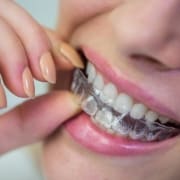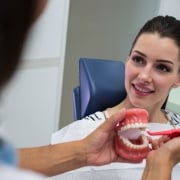How do Lingual Braces Differ From Traditional Braces?
When you visit your dentist to get orthodontics in Houston, TX, you’ll have a choice as to what kind of braces you want. Your choice will depend on the orthodontist’s recommendation, the severity of your alignment issues, and your lifestyle. Even when your orthodontist recommends traditional braces to best treat your circumstances, you still have a choice between traditional braces and lingual braces.
What Are Lingual Braces?
Lingual braces are attached to the back of the teeth, closest to the tongue. Traditional braces have brackets facing outward, closest to the lips. In many ways, lingual braces are identical to traditional braces, including in the level of severity of alignment issues that they can treat. But there are important differences between them.
Comfort
When you speak, your teeth rub up against the insides of your lips to a certain degree. Traditional metal braces can be uncomfortable and even abrasive, especially when you first get them and aren’t yet familiar with them. On the other hand, Lingual braces don’t irritate the soft tissue of the inner lips since they’re installed on the backs of the teeth. For this reason, they’re considered the more comfortable option.
Treatment Complexity
Both types of braces can address a wide range of orthodontic issues, but the complexity and duration of treatment might differ. Lingual braces may require more specialized skills and technology for placement and adjustment, potentially making them suitable for certain cases. However, adjustments might take longer, and overall treatment duration can vary based on your needs. Your dentist will be able to discuss all the details with you during your orthodontic consultation.
Do you still have questions about braces? Contact your Houston, TX, dentist at Chloe Dental to get all the answers you need to make an informed choice!








